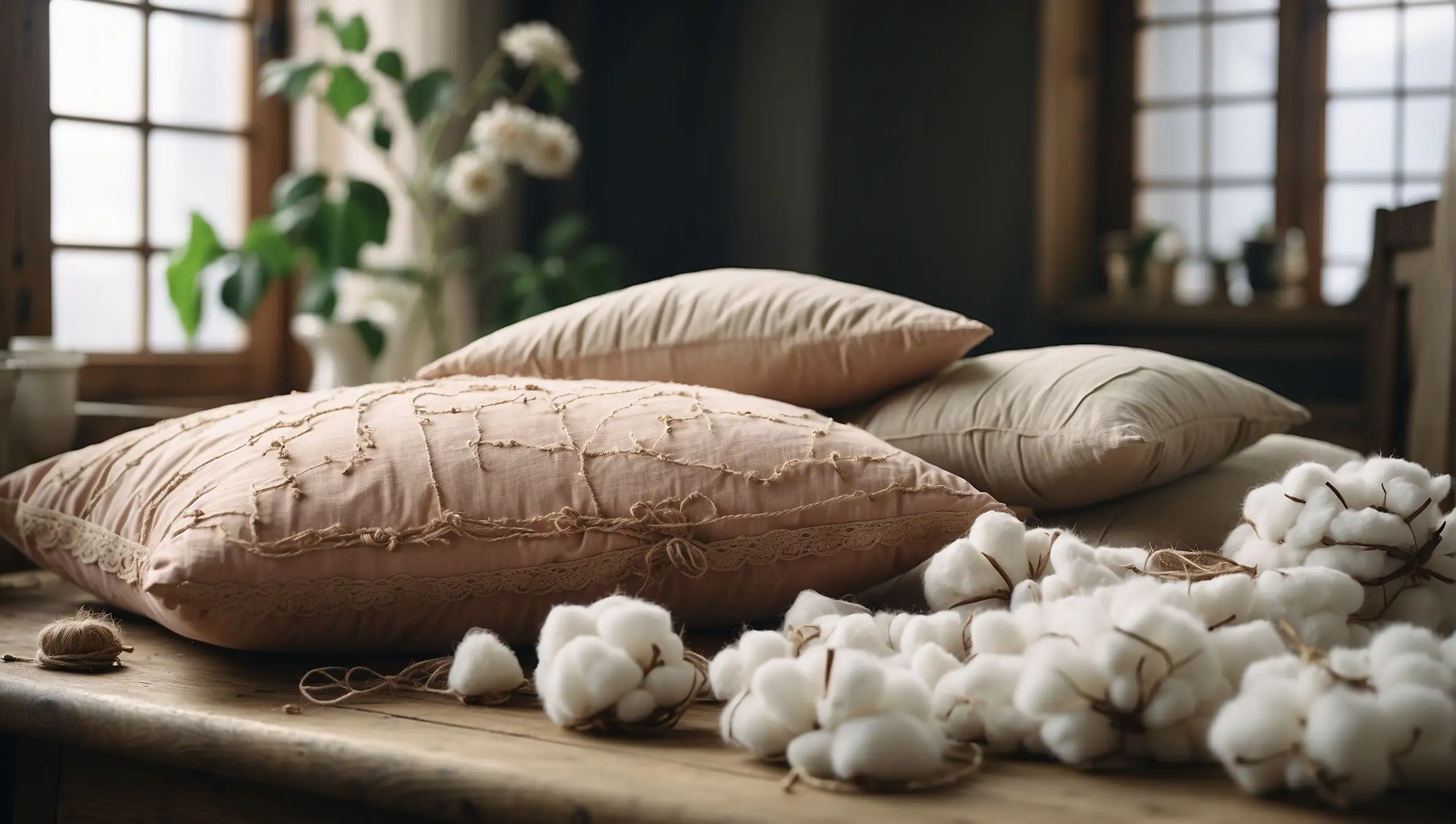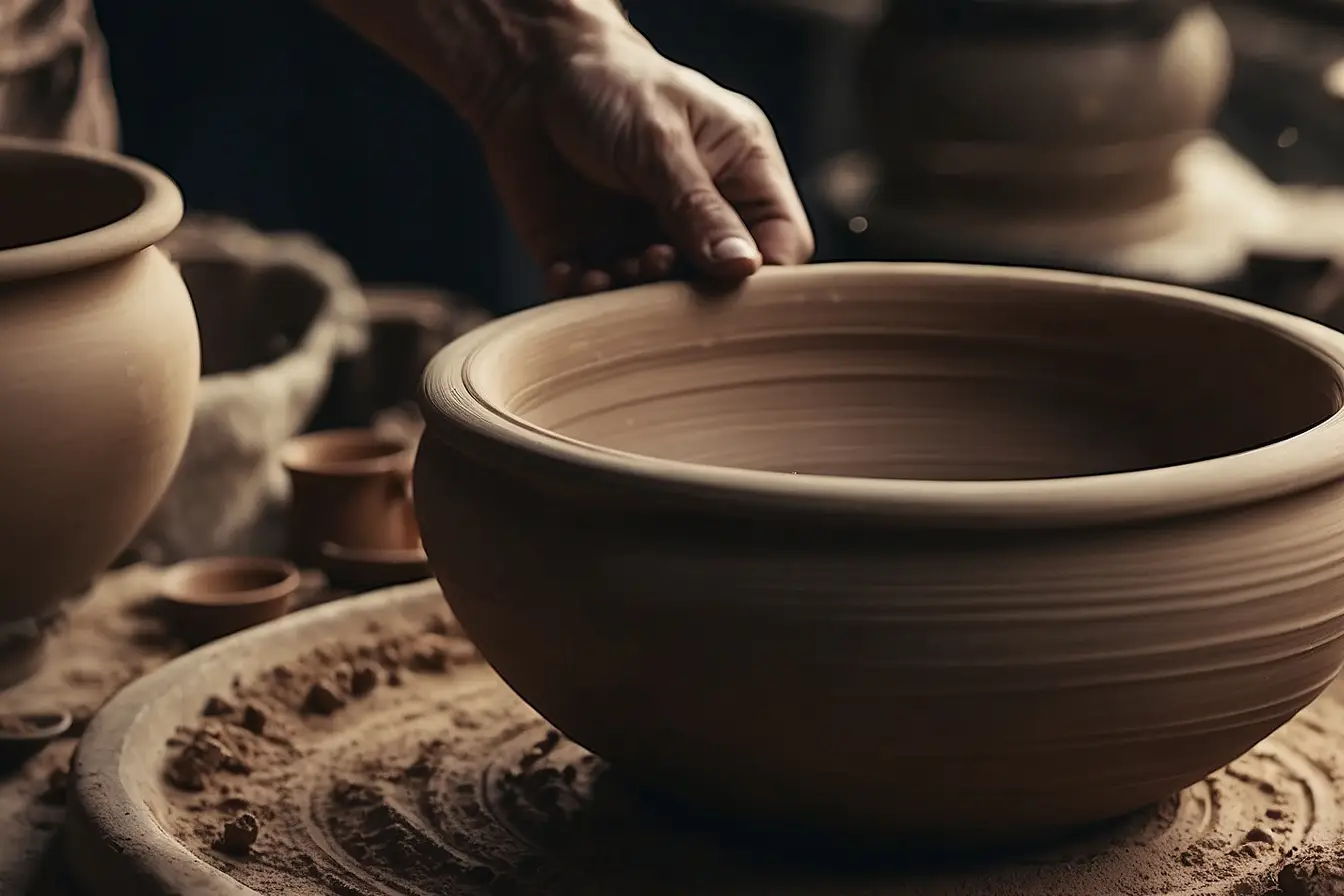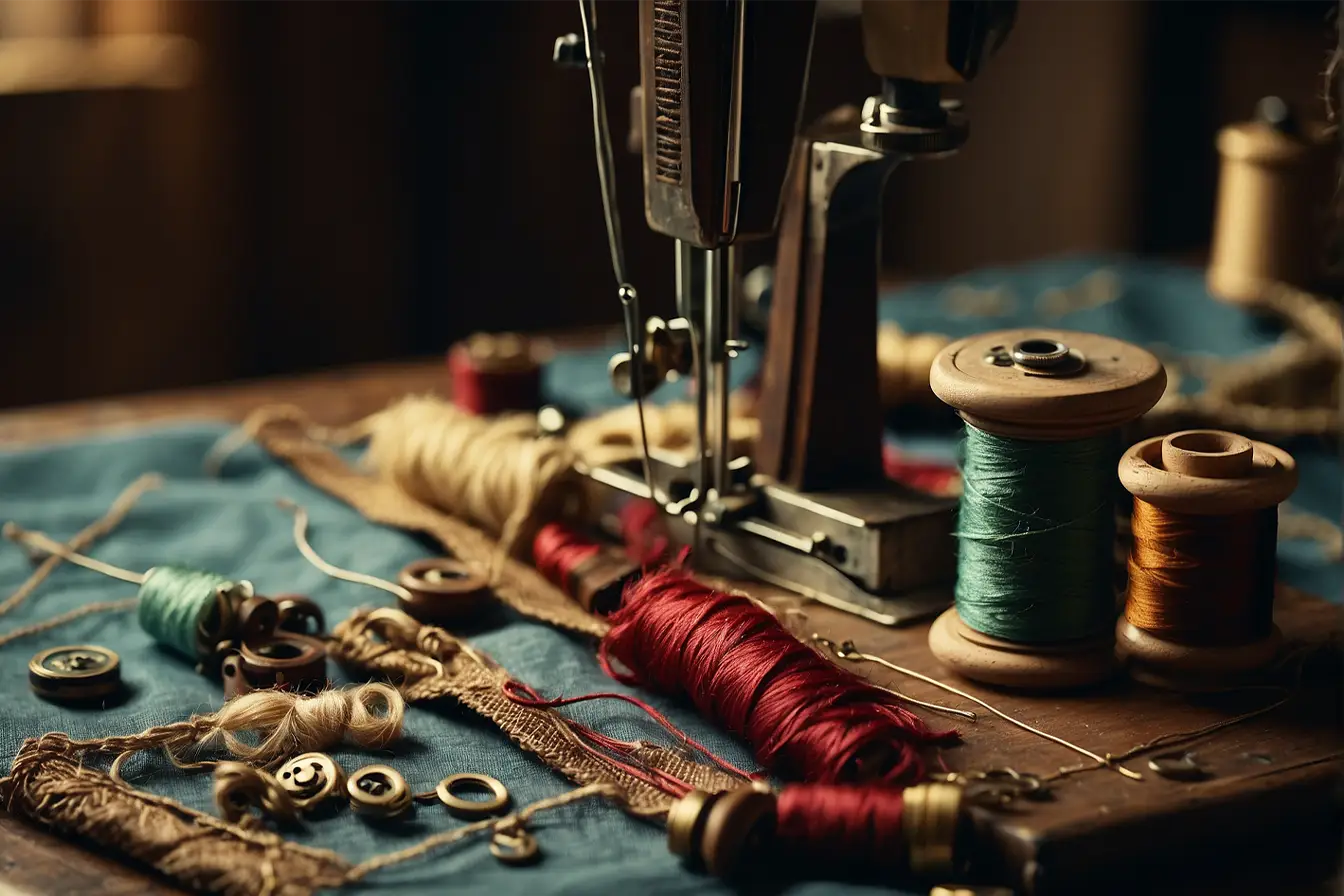Pottery Making
Pottery is one of the oldest crafts in human history. In Madinah, it became popular due to the availability of raw materials - water and soft soil - in the surrounding valleys.


It is the craft of manufacturing various cotton products according to practices and ways common to the craft community.
Cotton makers manufacture cotton mattresses, cushions and pillows. A cotton maker was traditionally known as 'naddaf' (cotton carder) because he used the cotton carding machine (Ar. naddafah) in his work. Carding has been known in Madinah since ancient times.
Carding is a craft with certain practices that are known among this industry community. Hand tools that were used in this craft include bows,strings, wax, thimbles, etc.
Cotton Making in Madinah is a very old craft. In the past, cotton makers used to go to houses to make household items, such as mattresses and pillows. Making cotton items was hard work. It took a full day's work to make two pillows. Cotton product stores were widespread in Madinah, too.
Producing a cotton product goes through several stages. In the initial stage, cotton is cleaned and disentangled, using a manual carding machine. It consists of a box, a string, a bow and a thimble. Then, the cotton maker places the carding machine in the cotton and hits the string to scatter and dismantle cotton.
The manual cotton making profession is scarcely found today, if at all. Products of this craft are hardly found today except in national festivals and heritage exhibitions. The number of craftsmen has decreased substantially because of modern advances in furniture industries and technology. The concerned authorities have contributed to the revival of this traditional craft through heritage festivals and exhibitions.

Pottery is one of the oldest crafts in human history. In Madinah, it became popular due to the availability of raw materials - water and soft soil - in the surrounding valleys.

It is a craft that has been practiced by all nations in all ages. It differs from one nation to another according to local culture and customs. In Madinah, it has been known since dawn, and is characterized by the diversity of styles.